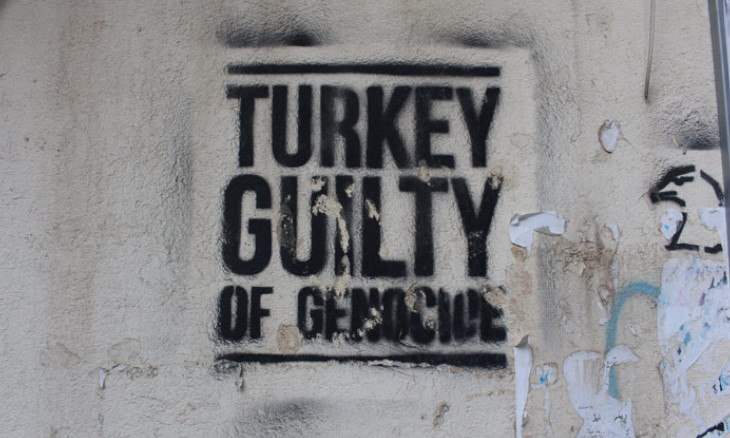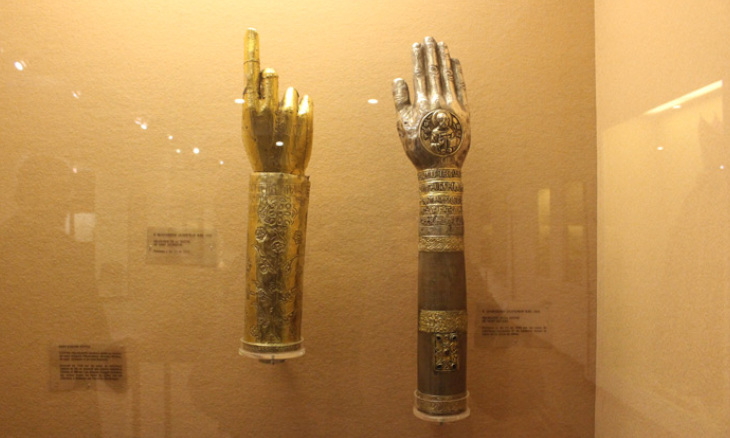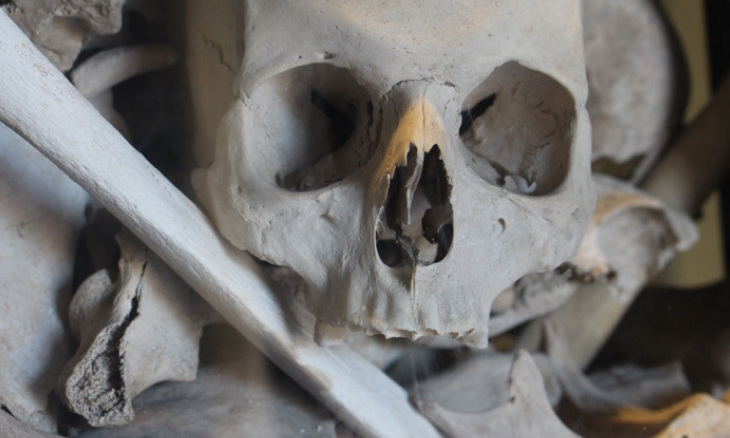Lebanon's Ottoman legacy: the Armenian Genocide
Serdar Korucu writes: One of the topics that comes to mind when recalling the Ottoman legacy in Lebanon is the Armenian Genocide. Among the most important symbolic structures carrying the traces of 1915 in Lebanon is the Armenian Catholicosate of the Great House of Cilicia in Antelias.
Serdar Korucu
A message shared by Lebanese President Michel Aoun on the 100th anniversary of the country's establishment last year was a source of tension between Ankara and Beirut. In the message, Aoun accused the Ottoman Empire of perpetuating “state terror” in the region, emphasizing that famine and forced labor resulted in the deaths of hundreds of thousands of people.
Ankara responded harshly to the announcement. According to the Ministry of Foreign Affairs, Aoun's message was “nonsense,” and a “distortion of history,” adding that in the history of the Ottoman Empire, there was no state terror and that to the contrary, the Ottoman era was a long period of stability for the Middle East.
Regardless of what the two countries argue about and whether their relations will sour, remain warm or fall apart completely, one of the topics that comes to mind when recalling the Ottoman legacy in Lebanon is the Armenian Genocide, even if the Lebanese president hadn't underlined this in his message last year.

Among the most important symbolic structures carrying the traces of 1915 in Lebanon is the Armenian Catholicosate of the Great House of Cilicia in Antelias. The actual center of the Catholicosate was in what is today the city of Kozan in Turkey's province of Adana, but what was formerly known as the Armenian city of Sis, once the capital of the Armenian Kingdom of Cilicia. Its fate changed in 1915.
More than one thousand priests who served the Catholicosate lost their lives in the Armenian Genocide. For his part, Catholicos Sahak II was exiled to Syria as Ankara's forces captured the area from France. From there, he went to Lebanon.
Until 1930, there was not a place to establish the Catholicosate. Eventually, it was established in Antelias, near Beirut. The importance of the Catholicosate of Cilicia cannot be denied, because it is second in the hierarchy of the four most sacred Armenian churches. The Catholicosate serves as a religious center for Armenians from Lebanon, Syria and Cyprus to Iran and the Gulf states, and has spiritual leadership representatives in Venezuela, the U.S. and Canada.
Among the most visited places within the Catholicosate is the Cilicia Museum, opened by Aram I in 1998.
“We present this as a monument of culture and belief to Lebanon, which welcomed us warmly after the Armenian massacres and has become a second homeland for Armenians in the diaspora,” Aram I said at the opening ceremony, thanking those who helped build it.
This museum contains a segment of the spiritual and cultural legacies of Armenians from the Cilician period. It is one section of the cultural treasures that were scattered across the lands due to the Armenian Genocide.

On the first floor of the museum are relics that represent body parts of holy Christian saints, including the right hands of St. Nicholas, St. Sylvester and St. Bar Sauma. These are among the most valuable pieces in the museum, made from silver and gold and displayed in a protective casing. There numerous other relics pertaining to saints that came from Sis, but there are also other artifacts that are not on display. One of these is the right hand of St. Krikor Lusarovitch (Gregory the Illuminator), who ensured that Armenians accepted Christianity as the state religion following the baptism of the Armenian king Tiridates III. This relic is used to consecrate water, the world, and the Armenian community every year on Gregory the Illuminator's saint's day, and is used once every seven years to consecrate the holy Myron oil. It is not openly displayed in the museum.
The definite departure of the Catholisocate occurred after the Armenian Genocide in 1921 after Ankara's forces took the area under their control. Prior to this evacuation, the priests in Sis were successful in saving a number of artifacts, including the candlesticks standing on both sides of the altar of the cathedral, a large silver chandelier made in 1804, the silk curtain on the altar, and the cauldron made from silver used to make holy Myron oil. By protecting these from being destroyed, they enabled them to be displayed in Lebanon.
There are also silver-bound bibles, religious books decorated with precious stones, frankincense, and silver pots and goblets in the museum. One characteristic of these works is that they belong to the pre-Genocide period and reflect the unique hand-craftsmanship of Armenians living in regions under Ottoman rule, including Cilicia and of course the capital of Istanbul.
Manuscripts are found on the second floor of the museum. The most unique among these include the Bible of Partsrpert and the ancient rituals book Mayr Mashdots. Most of the manuscripts on display are reproductions. However, they still give visitors an idea about the works of Armenian masters from hundreds of years ago. The tradition of manuscripts continued until the end of the 17th century, but the printed books that replaced them are among the most important pieces of the museum as the Armenian printing press started to work in Europe in 1512 and continued in the Ottoman capital in 1567. In the Cilicia Museum, there are examples of books printed in the first printing houses of important centers such as Venice, Istanbul, Amsterdam and Marseille. On the same floor, there is also a collection of archaeological remains and Armenian coins.
The second floor of the museum reflects the carpet tradition from the 18th to the 20th centuries. There are paintings and sculptures on the third floor. Approximately 350 paintings and 20 sculptures are on display. The special feature of this floor is that it gives visitors a chance to see the first, second and third generations of the Genocide.
Inside the Catholicosate monastery in Antelias, there is another structure beside the Cilicia Museum: the Armenian Genocide Monument. Like the Catholicosate building, the monument was built on the land of the building belonging to the American organization Near East Relief, which served as an orphanage for Armenian children who lost their parents in the 1922 genocide.
This genocide monument built in 1938 is different from its counterparts. When you enter the monument, the words of Matyos Nalbantyan Efendi, who spoke at parliament in December 1918, may come to mind:
“Armenians in the Anatolian provinces were chopped like leeks. They turned that place into Graveland,” he said.

In this monument, there is a section from that “Graveland.” In fact, this is the monument for those who do not and could not have graves.
There are skulls and bones on display in a glass column that were brought from Syria in the 1930s, remains from the Der Zor desert, known as the “Auschwitz of Armenians,” where ISIS destroyed the Armenian Genocide Memorial Church in 2014. Their names, places of birth and genders are not and could never be known, as the heritage of the Ottoman Empire in Lebanon and the Middle East.
Author:
Journalist
